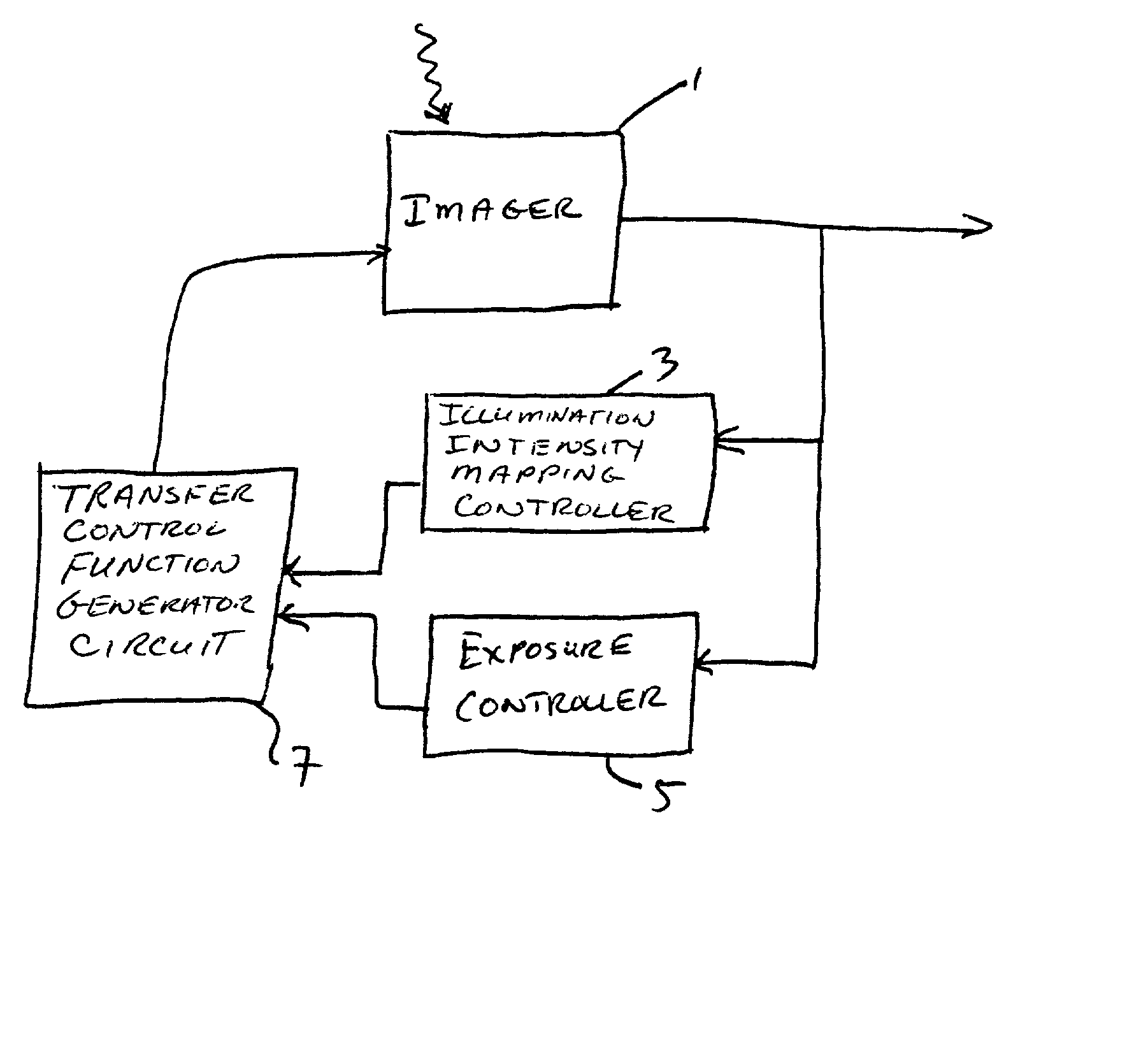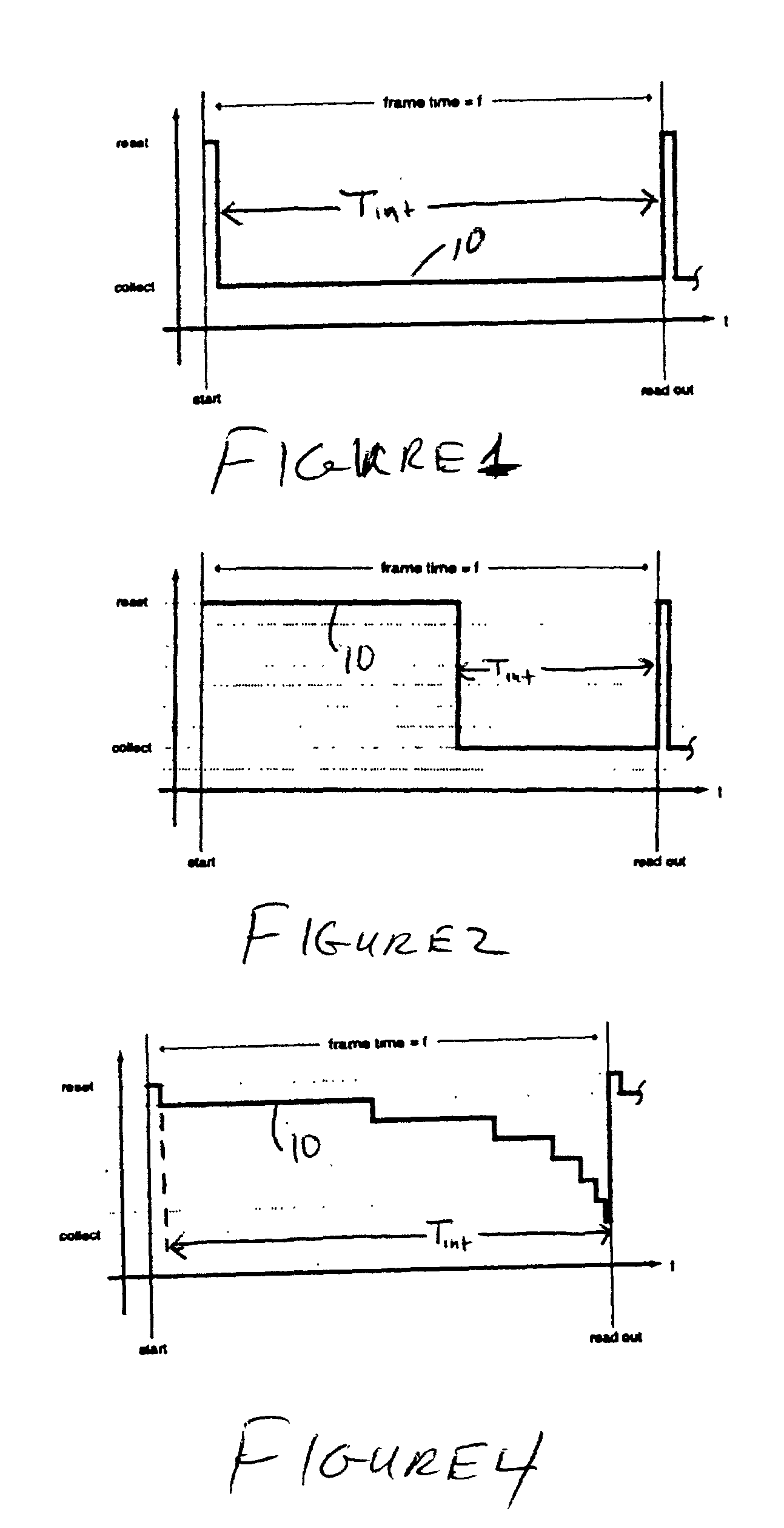Adaptive sensitivity control, on a pixel-by-pixel basis, for a digital imager
- Summary
- Abstract
- Description
- Claims
- Application Information
AI Technical Summary
Benefits of technology
Problems solved by technology
Method used
Image
Examples
Embodiment Construction
[0050] It is desirable to increase the dynamic range of the digital imager such that the low illumination intensity levels of the scene are emphasized, but also the high illumination intensity levels of the scene are represented and no pixels become saturated during a given integration period. Moreover, it is desirable to utilize the entire dynamic range of the digital imager when imaging a scene, notwithstanding the actual range of illumination intensities of the scene.
[0051] The present invention provides techniques and systems for adjusting the sensitivity, on a pixel-by-pixel basis, of a digital imager by adjusting the transfer control function (resulting in the production of the control signal) through determining an illumination intensity level mapping function and an integration time characteristic of the digital imager in a manner that enables full use of the entire output intensity level range of the digital imager without saturation of the digital imager. These techniques ...
PUM
 Login to View More
Login to View More Abstract
Description
Claims
Application Information
 Login to View More
Login to View More - R&D
- Intellectual Property
- Life Sciences
- Materials
- Tech Scout
- Unparalleled Data Quality
- Higher Quality Content
- 60% Fewer Hallucinations
Browse by: Latest US Patents, China's latest patents, Technical Efficacy Thesaurus, Application Domain, Technology Topic, Popular Technical Reports.
© 2025 PatSnap. All rights reserved.Legal|Privacy policy|Modern Slavery Act Transparency Statement|Sitemap|About US| Contact US: help@patsnap.com



